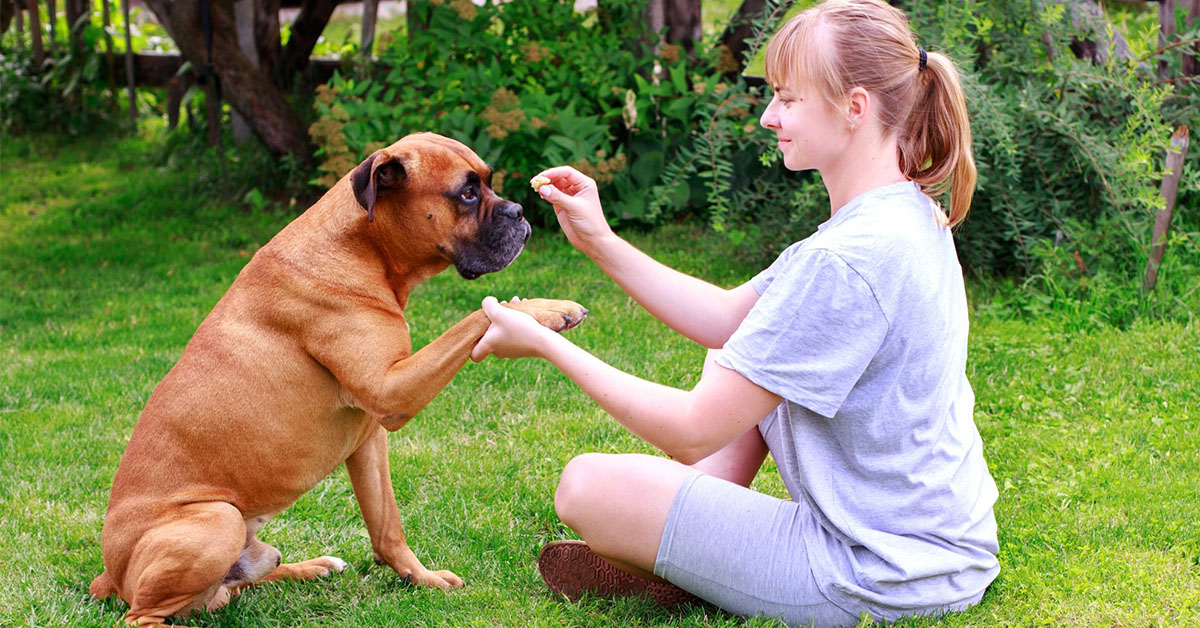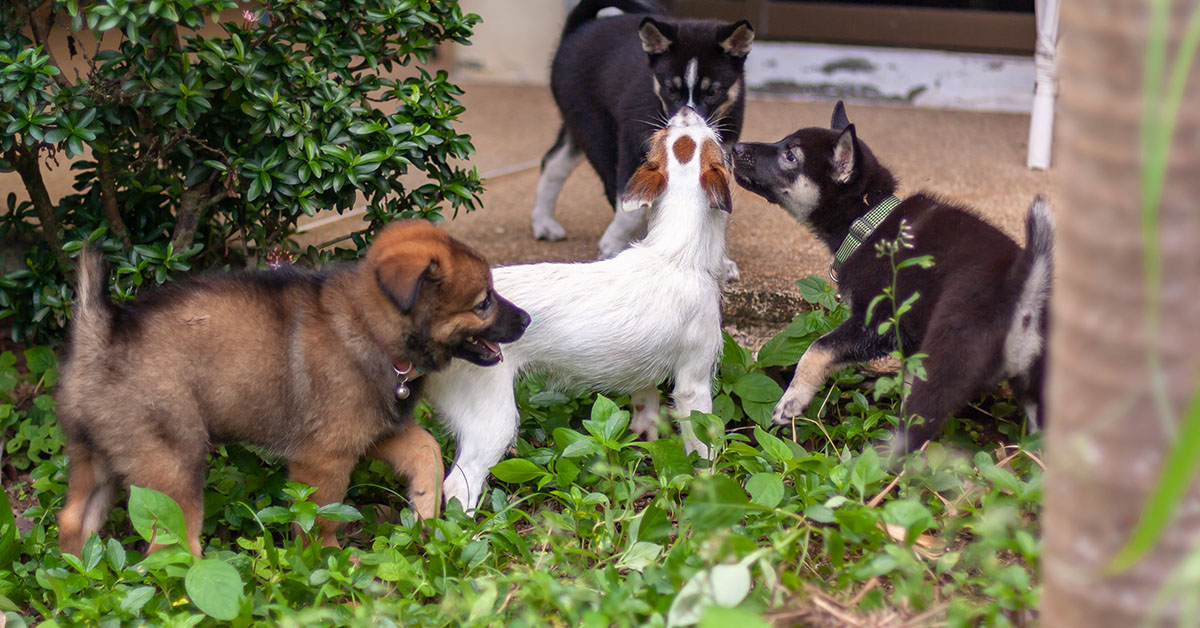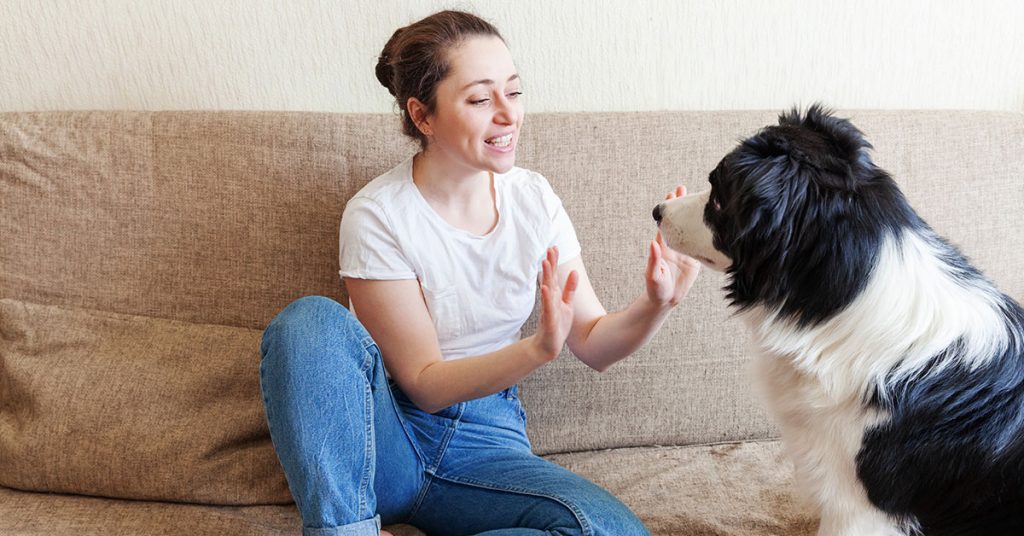Deaf dogs need special care and attention, so understanding their needs is crucial. When a dog is deaf, it poses unique challenges that require thoughtful consideration. This comprehensive guide will explore how to care for a deaf dog, including how to communicate with him and how to keep him safe and stimulated.
With the proper insight and techniques, you can ensure that your deaf canine companion leads an enriching and fulfilling life. Let’s explore practical tips and strategies for building a solid bond between you and your deaf dog.
How to Care for a Deaf Dog
Taking care of a deaf dog means understanding their unique needs and making adjustments to ensure their safety, happiness, and well-being. Here’s a detailed guide on how to care for your deaf dog:
1. Using Visual Tags
You can attach visual tags to your dog’s collar or harness so others can identify it as deaf. The tags can include symbols or text indicating deafness so people can communicate through visual cues or gestures. If your dog is out in public or interacting with unfamiliar people, visual tags help ensure clear communication.
2. Use Hand Signals for Communication

Hand signals are the primary means of communication with your deaf dog. Establish precise, consistent gestures for basic commands such as “sit,” “stay,” and “come.” Consistency and repetition are crucial to reinforcing these signals and ensuring your dog understands your intentions.
Additionally, positive reinforcement techniques such as treats and praise should be used to reinforce desired behaviors. With patience and consistency, your deaf dog can learn to understand and respond to a wide range of hand signals.
3. Attentiveness and Observation
Pay close attention to your deaf dog’s body language and behavior. Because they can’t hear, their communication relies mainly on visual cues and gestures. Watch their tail wagging, facial expressions, and body posture to see how they’re feeling. Keeping an eye out for their signals will help you meet their needs and strengthen your bond.
Furthermore, it helps them feel safe and secure and provides comfort and reassurance in new or stressful situations.
4. Enriching Scents for Stimulation
Adding enriching smells to your deaf dog’s environment will enhance his sensory experience. Include scent-based games and activities, like scent trails or hiding treats for them to find using their keen sense of smell.
Use scented toys or puzzle feeders to engage their olfactory senses and stimulate their brains. By tapping into their natural abilities, you can make your deaf dog’s life more enjoyable and rewarding.
5. Train with Positive Reinforcement
Make sure your deaf dog receives positive reinforcement during training. Treats, praise, or toys can reinforce understanding and encourage repetition. By keeping training sessions short, fun, and consistent, you can maintain interest and build confidence.
Avoid punishment-based methods since they can cause confusion. Create a positive learning environment to make your dog feel safe and motivated to learn. Your deaf dog can learn new skills and behaviors with patience, consistency, and positive reinforcement.
6. Maintaining Safety
Take extra precautions to protect your deaf dog from potential hazards. Since they can’t hear approaching dangers, being vigilant in their environment is crucial. When outside, keep them on a leash or in a securely fenced area to prevent accidents.
If you’re in an emergency, flashing lights or vibrating collars will get their attention. Also, use a reflective collar or vest for visibility, especially at night. Making sure your deaf dog stays safe and secure in their surroundings starts with prioritizing safety.
7. Monitoring Interactions with Other Dogs

Monitor your deaf dog’s interactions with other dogs, both in controlled environments and on walks. They can’t hear warning signals or cues from other dogs, so if play gets rough, you need to step in. Watch for signs of discomfort or tension in your dog’s body language, like stiffening, lip licking, or avoiding eye contact.
To prevent conflicts, calmly redirect their attention or remove them from the situation. Your deaf dog can have a positive social experience with other dogs if you actively supervise their interactions.
8. Prioritizing Physical Feedback
If you want to communicate effectively with your deaf dog, focus on physical feedback rather than verbal feedback. They prefer physical gestures such as gentle touches, pats, and hand signals since they rely on visual cues and tactile sensations.
You can use tactile cues to guide them during training or to convey affection and reassurance. Physical communication strengthens your bond with your deaf dog and ensures precise, consistent interactions that they can easily understand.
9. Stopping Startle Responses
Avoid situations that may startle your deaf dog since they may be more sensitive to sudden movements. Avoid sneaking up on them from behind and approach them gently. If you want to wake them up from sleep, gently tap or touch them so they are not startled.
Before interacting with them, use visual cues or vibrations to alert them of your presence. Your deaf dog will feel more secure and comfortable in their environment if you think about their sensitivity to sudden stimuli.
10. Microchipping for Identification
Ensure your deaf dog’s safety by microchipping it for identification purposes. A microchip implanted beneath your dog’s skin can help reunite you with them if they wander off or get lost. If your dog gets lost, keep the microchip information updated with your current contact information to make it easier to find him. Especially for deaf dogs, microchipping adds an extra layer of protection and peace of mind.
11. Investing in a GPS Tracker
Invest in a GPS tracker for your deaf dog to enhance his safety and security. You can attach them to your dog’s collar and track their location via a smartphone app. Whenever your dog wanders off or gets lost, you can find them quickly and get them back safely.
GPS trackers are great for deaf dogs who can’t respond to verbal commands or auditory cues. Having one on hand can give you peace of mind that your pet can be easily found and returned.
FAQs
Is it hard to take care of a deaf dog?
Taking care of a deaf dog has its challenges, but with patience and understanding, it can be rewarding. You may need to adjust your communication methods, relying more on visual cues and hand signals. Additionally, making sure they’re safe becomes paramount, like using a GPS tracker or a leash.
It’s true that many deaf dogs have happy, fulfilling lives because of their loving owners. Dogs can have strong bonds with their owners if they’re properly trained and cared for.
Can a deaf dog live a normal life?
Absolutely! With the proper care and support, deaf dogs can live fulfilling and normal lives. While they may have some communication and safety challenges, they can adapt remarkably well. They can learn commands and behaviors just like hearing dogs with visual cues and hand signals.
It’s important to ensure their safety and use tools like GPS trackers and microchips. Like any dog, deaf dogs can be happy when their owners show them love, patience, and understanding.
Read More: How To Care For A Dog Wound?
Final Thought
Taking care of a deaf dog takes patience and dedication, but the rewards are immeasurable. With alternative communication methods, a safe environment, and a focus on their well-being, you can make their life as fulfilling and enriching as possible.
Like any other pet, deaf dogs can form deep bonds and bring joy to their owners. If you love your deaf dog, keep them patient, and give them proactive care, your dog will thrive.




